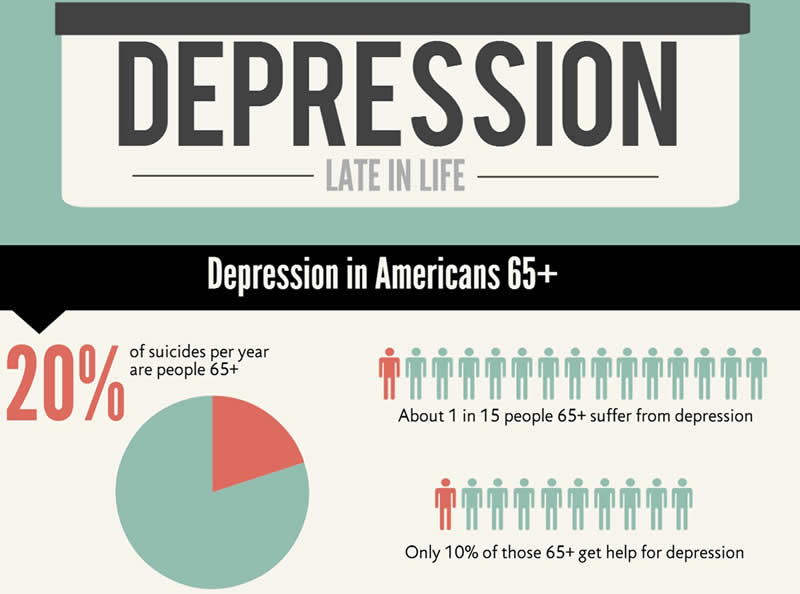Video from: Choose Psychiatry
The video above illustrates the signs of depression in the elderly as well as the the resources that are accessible if you happen to be a victim of depression.
Depression in the elderly community is a common problem. According to Health, “… nearly 20% of the older populationtwice the rate of younger cohortsexperiences it. Even more troubling, only half of seniors with mental health problems gets treatment of any kind, and less than 3% get treated by a mental health specialist.” The information below is aimed to display the severity of the issue and to correct some of the myths and misconceptions.
According to the National Institute Of Mental Health, the following are the most common types of depression that occur in the elderly:
- Major Depression—severe symptoms that interfere with your ability to work, sleep, concentrate, eat, and enjoy life. Some people may experience only a single episode within their lifetime, but more often, a person may experience multiple episodes.
- Persistent Depressive Disorder (Dysthymia)—depression symptoms that are less severe than those of major depression, but last a long time (at least two years).
- Minor Depression—depression symptoms that are less severe than those of major depression and dysthymia, and symptoms do not last long.
Elderly Depression is often overlooked for many reasons such as the affected elderly…
- is just getting old so they have a reason to be sad
- has no one to look out for them causing the illness to go unnoticed
- may not notice that their limited physical abilities is sign of depression so they tend to ignore it
- may not feel like asking for help or talking about how they are feeling

Image from: Infogrpahic
Statistics of Depression, according to Mental Health America:
-
“Comprising only 13% of the U.S. population, individuals aged 65 and older account for 20% of all suicide deaths, with white males being particularly vulnerable.
-
Suicide among white males aged 85 and older (65.3 deaths per 100,000 persons) is nearly six times the suicide rate (10.8 per 100,000) in the U.S.
- More than two million of the 34 million Americans age 65 and older suffer from some form of depression
-
Approximately 68% of adults aged 65 and over know little or almost nothing about depression.
-
Only 38% of adults aged 65 and over believe that depression is a “health” problem.”
Works Cited: